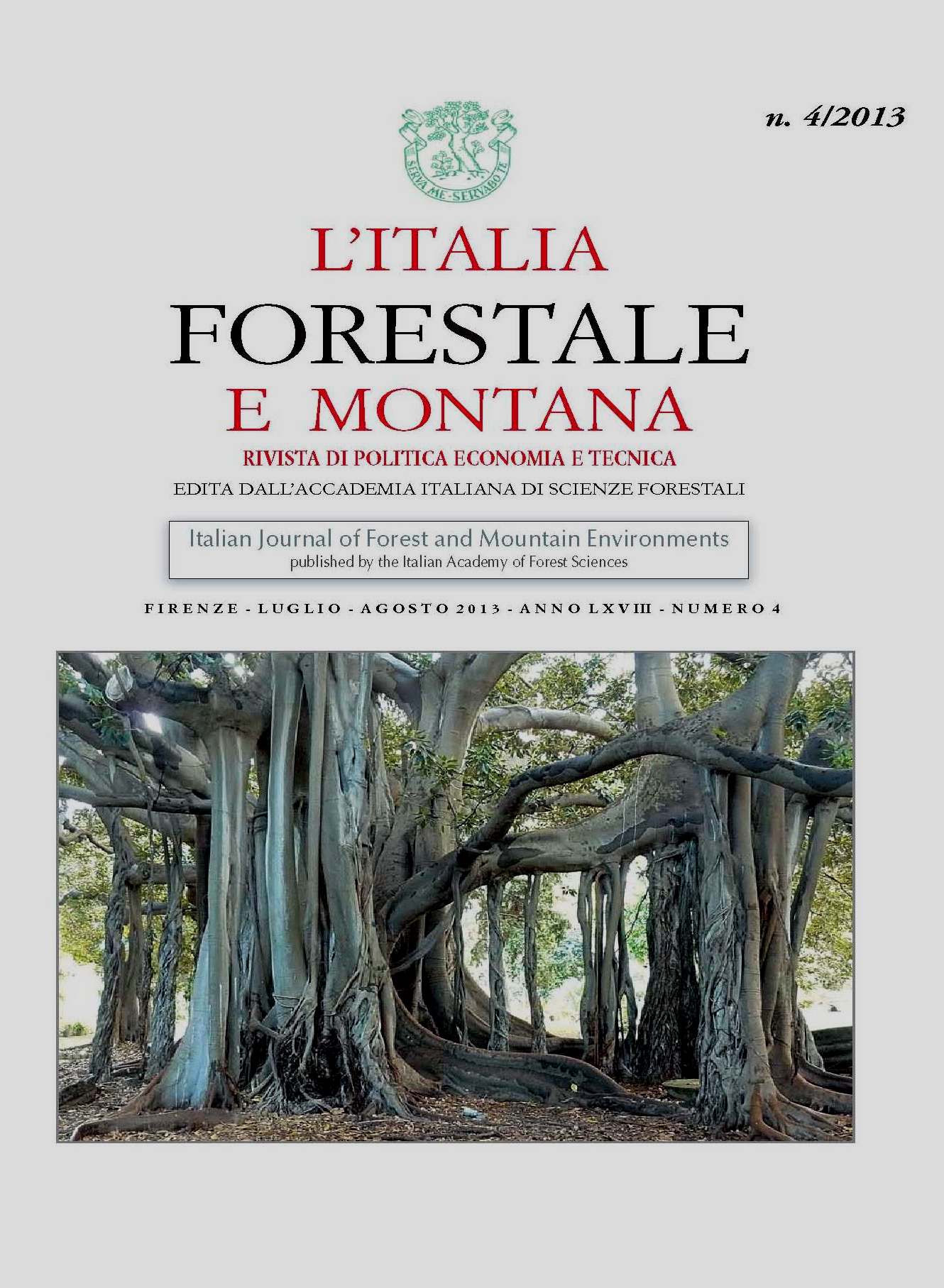Articles
Man and environment. The Pleistocene interaction between Homo erectus and the ecological systems in which he lived
Published 2013-09-02
Keywords
- man and environment,
- Pleistocene,
- Homo erectus,
- ecosystems
Copyright (c) 2013 Italian Journal of Forest and Mountain Environments

This work is licensed under a Creative Commons Attribution-NonCommercial 4.0 International License.
Abstract
Homo erectus came from Africa 2 My to Southern Europe, Southwestern Asia and North Africa. Our remote ancestors, once they became part of the many differentiated ecological systems they encountered, acquired knowledge about the latter’s physical and/or biotic components and overall functioning needed to survive. They paid special attention to the rocks, both in terms of their abodes – caves and rock shelters – and lithic materials they used to produce tools.They also learned the complex interplay between
climate, vegetation and fauna, both in phenological and
ethological terms. Homo erectus knew or discovered fire, likely as a result of lightning strikes, volcanic eruption and other natural events. At first, he probably exercised only passive control, reviving and diffusing the flames encountered while scouting the forest in the aftermath of a fire, looking for ash salts and naturally roasted fruit, seed and animals. Such passive use ended about 0,4 My, then it began to slowly be replaced by a more active approach, characterized by fire generation and conservation, as needed in order to keep carnivores at bay, to heat and light up Homo erectus’ dwellings and cook his food. This is probably the first ecological transition shown by humankind, followed by others, still centered on the active use of fire, such as food production derived from agriculture and husbandry, urbanization and industrialization.

